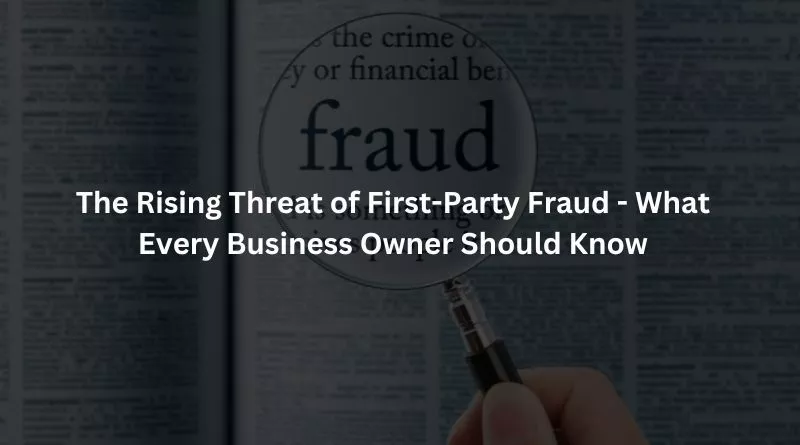While traditional third-party fraud entails stolen credit card credentials or identity theft, first-party fraud is a growing threat facing businesses.
These scams range from de-shopping (buying items intending to return them) to claiming non-delivery or fronting (a typical example seen in auto insurance where a teen is added as a primary driver, raising their rates).
This type of fraud can damage customer relationships and impact the bottom lines for all companies, from banks to telcos providing payment processing or handset finance.
Social Engineering
Criminals have proven resourceful in circumventing fraud defenses put into place by merchants, card issuers, and networks. Despite these advancements, first party fraud continues to increase.
Malicious actors often use social engineering to access sensitive data or information. This can be done via phone or computer.
Attackers may pose as a coworker or another employee with a valid role in your organization to access restricted office areas or obtain passwords or other important information.
Malicious attackers also may dangle bait like free movies, music, or other enticing downloads to lure users into downloading malware.
Additionally, they may use tactics like tailgating to follow authorized employees through security scanners or even into restricted office building areas.
They may also use USB baiting, placing malware on a USB and leaving it where employees are likely to pick it up. This can lead to malware infections and network disruptions.
Identity Theft
While everyone knows that their identity is at risk due to data breaches and stolen information for sale on the dark web, fewer realize that businesses are also susceptible to identity theft.
Criminals steal customers’ and employees’ personal information from companies of all sizes—from large corporations to small stores—to commit various crimes, such as fraudulent transactions or identity fraud.
This can be as simple as stealing a company’s name to open lines of credit or resurrecting a defunct business without the original owner’s knowledge.
The resulting debts often leave the victimized business struggling to pay suppliers, keep wages current, or even meet loan repayments.
Other theft methods include registering a company’s trademark as a fake website, web defacement, and filing fraudulent uniform commercial code (UCC) statements.
To protect against this type of crime, check all accounts daily and set mobile alerts to spot suspicious activity sooner. A strong password and two-step verification can help limit account access to only trusted users.
Chargeback Fraud
Chargeback fraud is a form of customer dispute, often caused by accidental errors or fraudulent intent. This fraud is sometimes called friendly fraud, but it is still a severe business problem.
Unlike traditional third-party fraud that involves stolen identities, this type of fraud is committed by consumers themselves. It is more difficult to identify, but it can be extremely costly.
This is why it’s essential to understand what first-party fraud looks like. Many fraudsters share similar characteristics: they are often younger, tech-savvy men in urban environments who don’t have much money.
Fraudsters use these details to create credit cards, loans, and money-muling accounts to launder funds. They also engage in fronting, a tactic wherein they claim to be the primary policyholder of an account (e.g., auto insurance) to save on premiums.
Another common type of first-party fraud is de-shopping, where a customer denies their purchase from a merchant, even though the product or service was delivered as promised.
Also Read: 5 Signs You Need Professional Oil Tank Cleaning Services
Fraudulent Transactions
While traditional third-party fraud typically entails impersonation, first-party fraud is about misrepresenting yourself or your intentions for financial gain.
It is often opportunistic, perpetrated on a small scale by individuals or an informal group. It may also be organized mainly by criminal gangs and fraud rings.
For example, a fraudster might buy a product or service online and then dispute it, claiming they did not authorize the purchase.
This is a type of fraudulent transaction known as chargeback misuse. Another example is when someone opens a bank account and uses it as a money mule to launder it.
Unlike third-party fraud, which is easier to detect due to activity patterns, it can be difficult for business owners to identify first-party fraud.
However, you can protect your company from these incidents in several ways. For one, behavioral analytics can help you spot suspicious transactions and suspicious customers.

Ashir Ali is the founder of ABusinessbBlog and BusinessSupervisor. He Started using WordPress in 2019 and has over 5 years of experience building websites. He Also loves to write on different trending topics in industry. His area of interest is latest innovations in different fields. Ashir holds a bachelors in Software Engineering from Comsats University Islamabad. He is currently studying masters in Computer Systems at RTU Latvia. He is passionate in developing websites and writing on different topics to help readers aware of latest trends.


